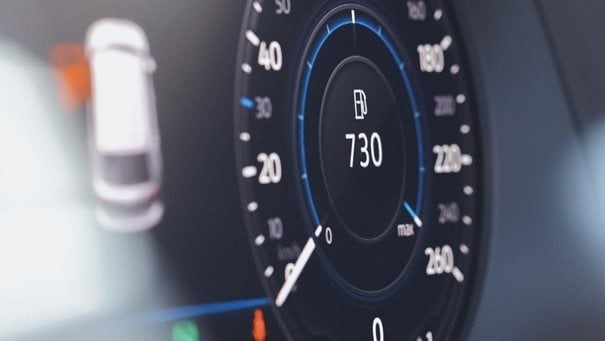Analyzing the Relationship between Automotive Innovations and Insurance Dynamics

Key Takeaways
- Technological vehicle advancements are intricately linked with car insurance policies and pricing changes.
- Features enhancing vehicle safety and the advent of autonomous driving are particularly influential on insurance industry practices.
- Telematics and usage-based insurance align insurance costs more closely with individual driving behavior.
Introduction to the Ever-Changing Automotive Landscape
The automotive industry has always been at the forefront of innovation, driving advances that significantly impact both the economics and experiences of transportation. These changes are transforming how vehicles are built, driven, and insured. It’s fascinating to see how adaptive cruise control and collision avoidance systems that were once the hallmarks of luxury cars have now permeated the mainstream market. As these technologies become standard, insurers are prompted to re-evaluate how they appraise risk, leading to changes in policy frameworks and pricing structures that reward safer vehicles with lower premiums.
The Rise of Safety Features and Their Effect on Insurance
In this continually evolving scenario, car insurance providers face the challenge of keeping pace with innovation while ensuring pricing remains fair and equitable for consumers. From electronic stability control to automatic emergency braking, manufacturers have loaded modern vehicles with safety features to prevent accidents and save lives. This isn’t just good news for drivers; it’s a development that could lower insurance claims and, by extension, premiums for policyholders. Studies have shown that certain technologies can significantly reduce the number of accidents on the road. Insurance companies frequently offer discounts for automobiles that are equipped with advanced safety systems. The industry’s recognition of the impact of new safety technology reflects a broader shift towards using data to inform policy decisions, ultimately benefiting insurers who pay out less in claims and drivers who enjoy safer travels at a lower cost.
Autonomous Vehicles: Navigating the Insurance Ramifications
The past decade has seen significant milestones in developing autonomous vehicles. The implications of this revolutionary technology extend far beyond transportation and into the legal and regulatory foundations of car insurance. With the driver no longer the sole agent in control of the vehicle, liability becomes complex in the event of an accident. Will the manufacturer, the software developer, or the car’s owner be responsible? Insurers closely monitor legal developments and technological advancements to develop insurance products that can address these questions. We are on the cusp of a paradigm shift, and how the insurance industry navigates these uncertainties will have lasting effects on consumers and car manufacturers alike.
Telematics and Usage-Based Insurance: A Synergistic Approach
Telematics technology has revolutionized the insurance industry, enabling a move towards more personalized and usage-based insurance (UBI) options. By using GPS and onboard diagnostics to monitor driving behavior, insurers can offer plans that reflect an individual’s driving habits rather than relying on broad demographics. This can mean lower premiums for those who drive less frequently or exhibit safe driving behavior. The increased adoption of UBI also empowers consumers to manage their insurance costs actively, fostering a more engaged and potentially safer driving community. As telematics becomes more widespread, we may see a significant restructuring of insurance premiums, solidifying the connection between insurance costs and observed driver safety.
The Impact of Electric Vehicles on Insurance Premiums
The electric vehicle (EV) market has surged in recent years, promising a greener and more energy-efficient mode of transportation. However, EVs’ relatively high purchase price and specialized maintenance and repair costs pose new challenges for insurance companies. These factors can lead to higher premiums in the short term as the industry works to understand and adjust to the unique risks associated with EVs. As electric vehicle technology becomes more widespread, insurers will have better data on which to base risk assessments. It may lead to lower premiums than traditional combustion engine vehicles. Thus, while electric cars promise an eco-friendly future, the insurance industry is still grappling with the best ways to assess and cover these modern marvels equitably.
Cybersecurity Risks in Modern Vehicles: Insurance Implications
Enhancing vehicle connectivity has brought convenience features such as navigation, remote diagnostics, and the ability to sync with mobile devices. Still, it also opens the door to new risks like hacking and data theft. Cyber-attacks’ potential to affect vehicle performance and driver safety brings insurance considerations into uncharted territory. To respond to these risks, insurers may develop new policies or adjust existing ones to cover cybersecurity incidents, much like traditional car accidents or thefts. As manufacturers continually update and fortify their vehicle cybersecurity measures, insurers must stay apprised of these developments to accurately assess risk in the ever-expanding domain of vehicular cybersecurity.
The Role of Data Analytics in Revolutionizing Car Insurance
In the data-rich environment of the digital age, insurance companies are finding innovative ways to leverage vast amounts of information to enhance their policies and services. The advent of big data analytics allows for the analysis of immense datasets to identify patterns and make more accurate predictions about individual risk factors. This granular approach is beneficial for refining premium calculations. Still, it can also help insurers proactively suggest ways for policyholders to reduce their risk—and, therefore, their premiums—through safer driving behaviors or adopting new safety technologies. The advancements in data analytics signify a leap forward in creating a tailored insurance experience that benefits insurers and policyholders. The industry is poised to become more responsive, competitive, and customer-focused by engaging with customers through data-driven interactions.
Addressing the Myths Surrounding Car Insurance Innovations
There are many misconceptions concerning the advent and adoption of new technologies within the car insurance industry. One such fallacy is that the more sophisticated the vehicle technology, the higher the insurance premium will necessarily be. Introducing safety and autonomous features could decrease premiums due to lower accident rates. Similarly, there is a myth that usage-based insurance invades privacy. However, most telematics programs are opt-in and transparent about the data collected. It is essential to confront these myths with information and education, ensuring consumers can make informed decisions about their insurance in a rapidly developing automotive arena.
The Future of Car Insurance in a Tech-Driven World
Looking ahead, it’s clear that technological innovation will continue to shape the car insurance industry significantly. Insurance providers must adapt their practices and policies with each groundbreaking development, whether in autonomous driving, telematics, or vehicle connectivity. In this dynamic landscape, consumer education will play a pivotal role. Drivers who understand the nexus between automotive technology and insurance are better equipped to navigate their options and reap the benefits of technological progress. As the bridge between cutting-edge automotive innovation and the insurance world continues to strengthen, all stakeholders must stay informed, adaptable, and proactive in embracing the future of mobility and protection.





